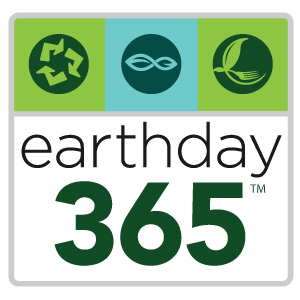How It All Began
In 1969, Earth Day founder Gaylord Nelson, then a U.S. Senator from Wisconsin, proposed the first nationwide Earth Day to help put environmental issues onto the national agenda. “It was a gamble,” he recalls, “but it worked.”
The inspiration to create Earth Day came after witnessing the ravages of the 1969 massive oil spill in Santa Barbara, California. Although mainstream America remained oblivious to environmental concerns, the stage had been set for change by the publication of Rachel Carson’s New York Times bestseller Silent Spring in 1962. The book represented a watershed moment for the modern environmental movement, selling more than 500,000 copies in 24 countries. Earth Day 1970 capitalized on this emerging consciousness, channeling the energy of the anti-war protest movement of the late 1960’s, and forcing environmental protection onto the national political agenda.
Senator Nelson announced the idea for a “national teach-in on the environment” to the national media; persuaded Pete McCloskey, a conservation-minded Republican Congressman, to serve as his co-chair; and recruited Denis Hayes as national coordinator. Hayes built a national staff of 85 to promote events across the land.
On April 22, 1970, the first Earth Day was celebrated both in Washington, D.C., and on college campuses throughout the country. An estimated 20 million Americans took to the streets, parks, and auditoriums to demonstrate for a healthy, sustainable environment in massive coast-to-coast rallies. Thousands of colleges and universities organized protests against the deterioration of the environment. Groups that had been fighting against oil spills, polluting factories and power plants, raw sewage, toxic dumps, pesticides, freeways, the loss of wilderness, and the extinction of wildlife suddenly realized they shared common values.
Earth Day 1970 achieved a rare political alignment, enlisting support from Republicans and Democrats, rich and poor, city dwellers and farmers, businesses and labor leaders. An estimated 20 million people participated in events calling for a healthy, sustainable environment. The first Earth Day helped the national push to create the United States Environmental Protection Agency and to pass the Clean Air, Clean Water, and Endangered Species Acts. Senator Nelson was awarded the Presidential Medal of Freedom, the highest honor given to civilians in the United States, for his role as Earth Day founder. This day marks what many consider as the birth of the modern environmental movement.
Twentieth Anniversary
As 1990 approached, a group of environmental leaders asked Denis Hayes to organize another big campaign. This time, Earth Day went global, mobilizing 200 million people in 141 countries and lifting environmental issues onto the world stage. Earth Day 1990 gave a huge boost to recycling efforts worldwide and helped pave the way for the 1992 United Nations Earth Summit in Rio de Janeiro. It also prompted President Bill Clinton to award Senator Nelson the Presidential Medal of Freedom (1995) — the highest honor given to civilians in the United States — for his role as Earth Day founder.
Earth Day in St. Louis
The St. Louis Earth Day Festival was first held in 1989, organized by a group of engaged citizens – individuals who continue to make a positive impact toward a more sustainable future for the St. Louis region today.
As the event grew over the years, so did programming related to fulfilling the mission of making Earth Day every day. In 2002, St. Louis Earth Day, now known as earthday365, was established as an independent 501(c)(3) nonprofit organization. At the time, outreach included its “Symposium” program, which was conducted through 2015 and educated planning professionals and municipal officials on the latest best practices for green building and sustainable design, with a special focus on stormwater management.
In 2006, a pilot of the event-greening consultancy program “Recycling On the Go” was launched – which has diverted over 628 tons and 10,600 cubic yards of recyclables and organics from area landfills since it was launched.
Having worked with many food vendors over the years, it was a natural extension of the organization’s expertise to establish the Green Dining Alliance in 2011 – a restaurant sustainability certification program. Both Recycling On the Go and the Green Dining Alliance are an application of the experience and knowledge gained from planning the St. Louis Earth Day Festival – an event which demonstrates a commitment to celebration while minimizing its negative environmental impact.
Each year, the dynamic and impactful programming of earthday365 touches more than 1 million people throughout the region in its work to educate and empower individuals to take action for a more sustainable future.
The history of St. Louis’s vibrant environmental sustainability scene is rooted in the work of earthday365.

